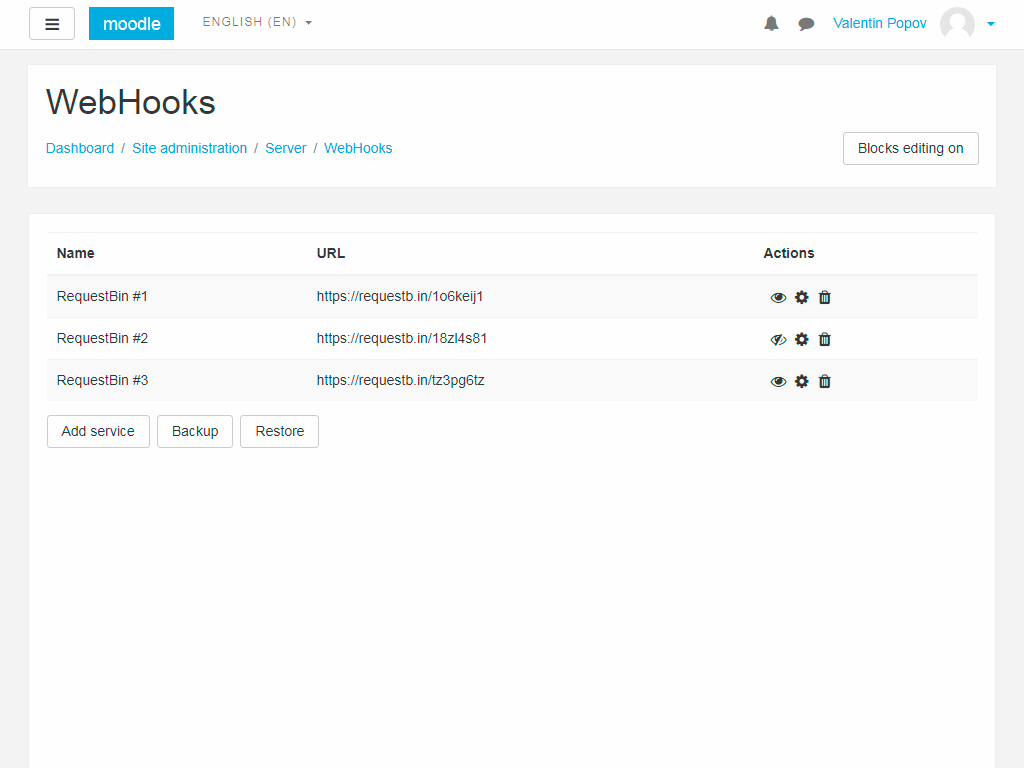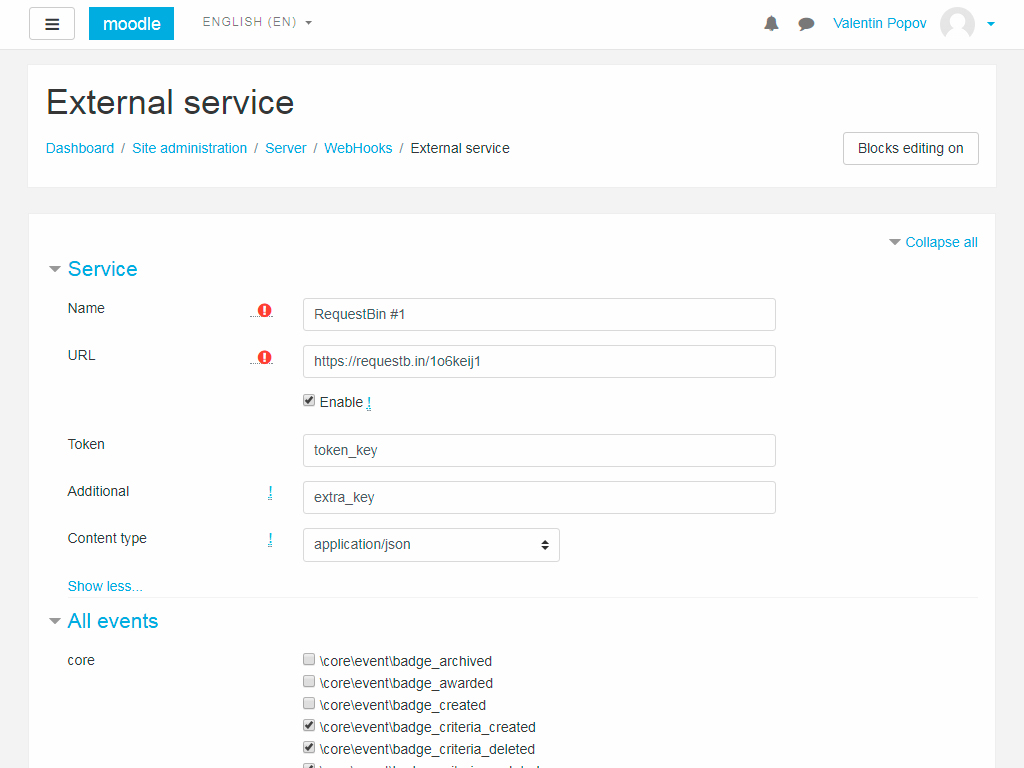2.9 KiB
Getting Started
Navigation
- Installation
- Build
- User guide
- Guide to the manager
- Guide to the editor
- Request format
Installation
Get the installation package in any of the available methods:
Build
Self-assembly package is as follows:
- Clone the repository:
git clone https://github.com/valentineus/moodle-webhooks.git moodle-webhooks
- Run the build script:
cd ./moodle-webhooks
/bin/sh build.sh
User guide
After you install the plug-in, the Service Manager appears on the Server tab in the administration panel.
To open the page, go:
Site administration ->
Server ->
WebHooks.
Guide to the manager
The main window looks like this:
On the main page you can see the list of services and manage each service separately.
Column description
- "Name" shows the name of the service.
- "URL" indicates the address of the service to which notifications are received.
- "Actions" allows you to enable / disable the service, edit and delete.
Description of control buttons:
- "Add service" opens a page for creating a new service.
- "Backup" loads the backup file of the service list.
- "Restore" redirects the data recovery page from the backup.
Guide to the editor
During the editing and creation of the service, this page opens:
The field "Name" stores an arbitrary name for the service
The "URL" field stores the address of the service to which notifications will be sent as a POST request.
The "Token" field allows you to specify an individual key that will allow an external service to identify requests.
The "Advanced" field stores a large string passed to the service. This can be useful for some services or users.
The "Content Type" field allows you to configure the type of outbound requests if there are compatibility issues.
The "All events" list contains a list of all events registered in the system. The selected events will notify the service.
Request format
Events come in JSON format.
An example of an observed course event:
{
"eventname": "\\core\\event\\course_viewed",
"component": "core",
"action": "viewed",
"target": "course",
"objecttable": null,
"objectid": null,
"crud": "r",
"edulevel": 2,
"contextid": 2,
"contextlevel": 50,
"contextinstanceid": "1",
"userid": "2",
"courseid": "1",
"relateduserid": null,
"anonymous": 0,
"other": null,
"timecreated": 1512961456,
"host": "localhost",
"token": "",
"extra": ""
}

